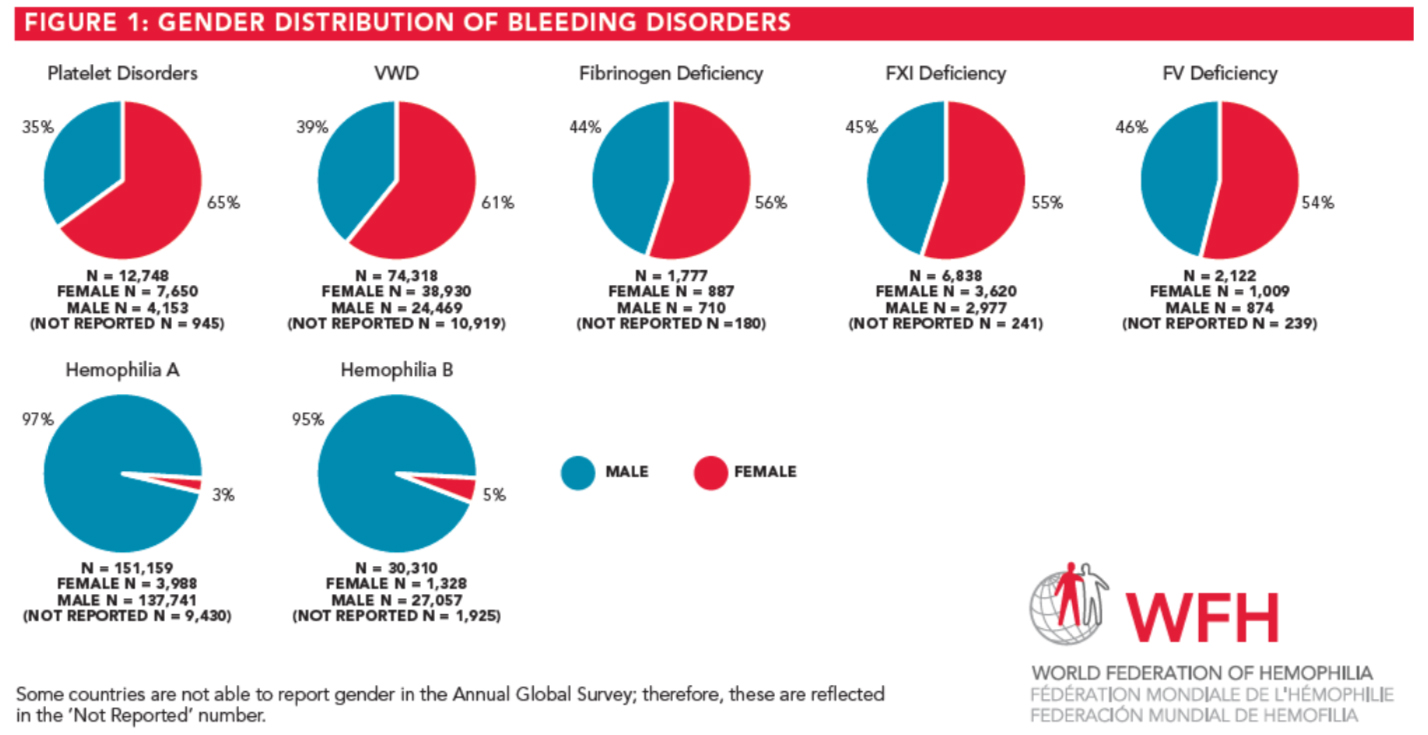Objective:
Through the Annual Global Survey (AGS), the World Federation of Hemophilia (WFH) has been collecting national aggregate data on people with bleeding disorders since 1999. Lack of diagnosis and treatment for women and girls with bleeding disorders remains a challenge in the bleeding disorder community. Highlighting gender data from the AGS can help bring awareness to the issues facing women and girls.
Methods:
The Report on the AGS 2015 includes demographic and treatment-related data from 111 countries, representing 91% of the world population. The AGS began collecting data on gender distribution in 2007. Gender data from 2007 to 2015 is summarized.
Summary:
The Report on the AGS 2015 demonstrates that 65,284 women were identified as having a bleeding disorder. The five types of hereditary bleeding disorders with the largest proportion of women are: platelet disorders (65%), von Willebrand (VWD) Fibrinogen (56%), FXI deficiency (55%), and FV deficiency (Figure 1). A gender breakdown for hemophilia A and B indicates that there are women who are affected by hemophilia (N=3,988 (3%), N=1,328 (5%) for hemophilia A and B, respectively) (Figure 1). The most common bleeding disorder for women and girls is VWD. From 2007 to 2015, the reported number of women with VWD increased by 17,220 (21,710 – year 2007, 38,930 – year 2015). This is a 79% increase in the number of women identified with VWD compared to a 65% increase in men identified with VWD during the same time period.

Conclusions:
AGS data recognizes the women and girls around the world who are affected by bleeding disorders. The WFH Annual Global Survey data is available to the bleeding disorder community as an advocacy tool.

